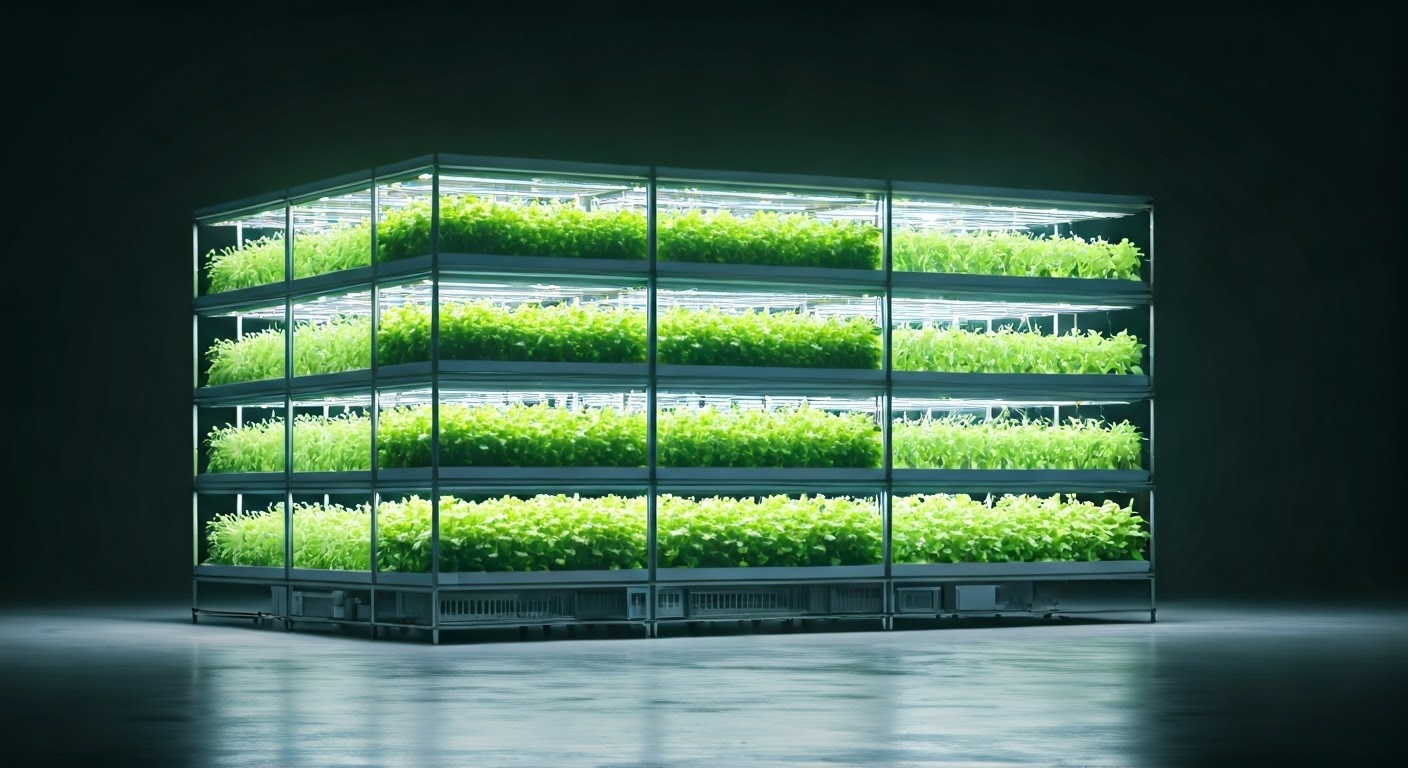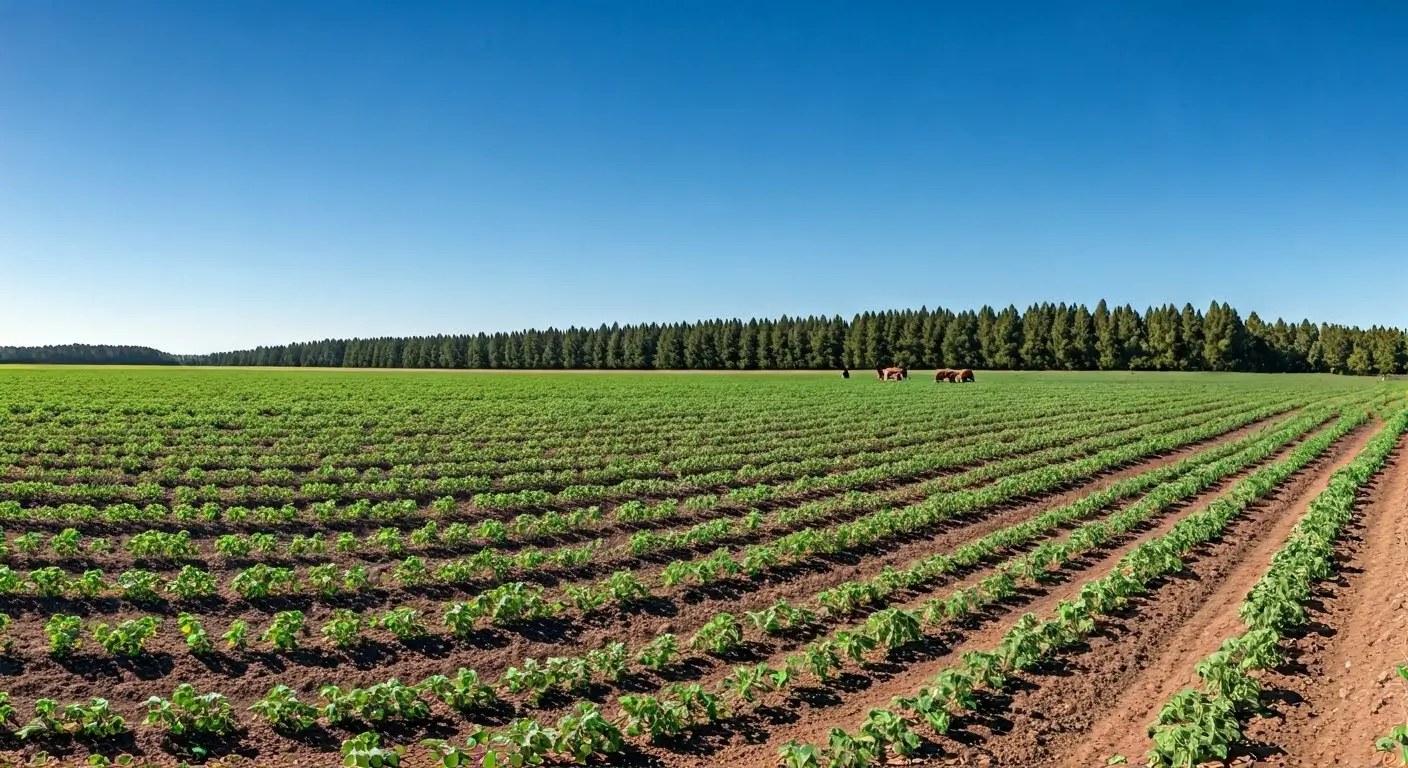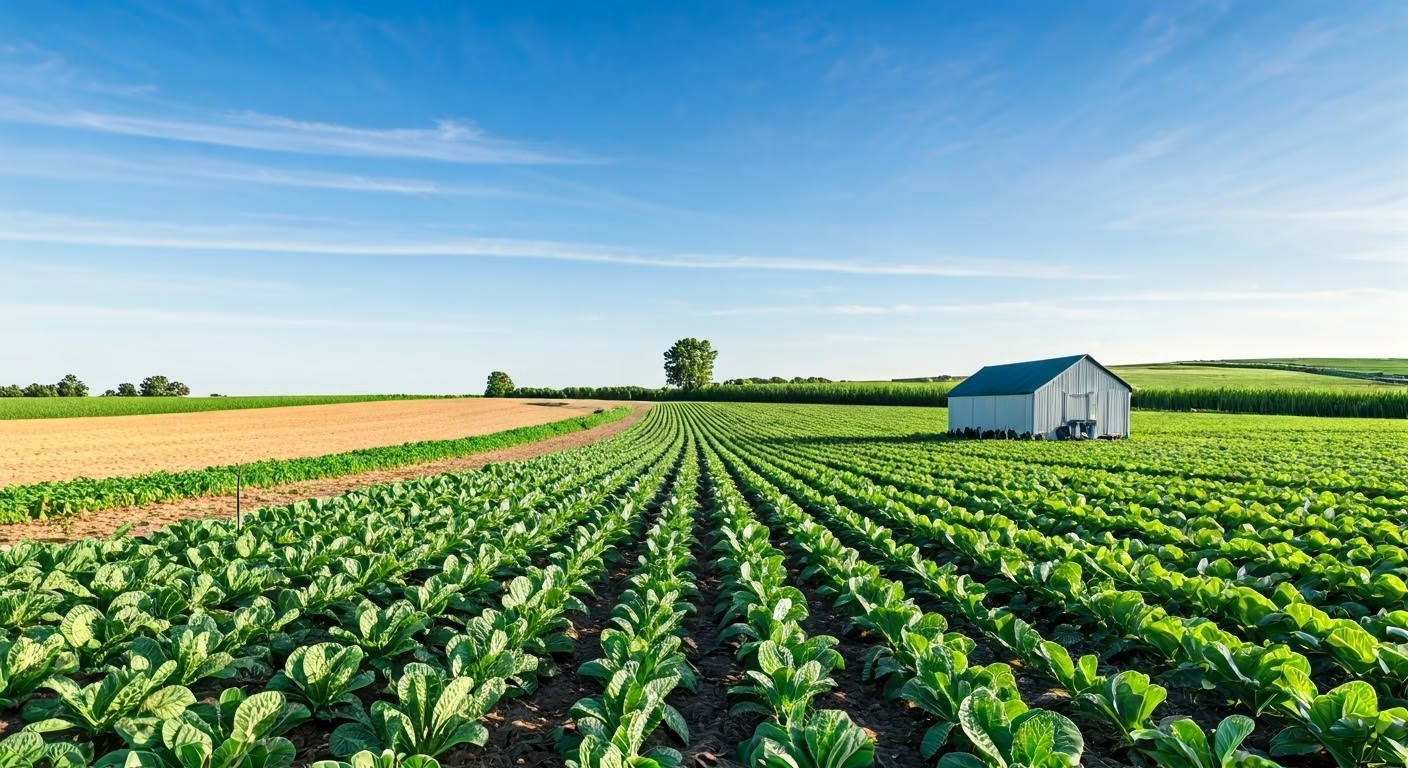Key Highlights
- Vertical farming is revolutionizing agriculture by growing crops vertically in controlled indoor environments, maximizing space and resource efficiency.
- This innovative approach tackles food security concerns by significantly increasing crop yields compared to traditional methods, ensuring a consistent supply of fresh produce.
- Sustainability is at the forefront of vertical farming, with water conservation, reduced pesticide reliance, and minimized transportation distances reducing its environmental impact.
- Cutting-edge technologies like hydroponics, aeroponics, and LED lighting are employed to optimize growing conditions and maximize yields regardless of external factors.
- Data analytics and automation play a crucial role in monitoring plant health, resource consumption, and environmental conditions, optimizing efficiency and minimizing waste.
Introduction
As the world population grows and climate change causes more problems, making sure people have enough food is more important than ever. Vertical farming brings hope. It offers a new way to produce food that solves some problems of traditional agriculture. This method grows plants in layers, one on top of another, inside controlled spaces. This fresh approach could change the way we feed our planet.
Exploring the Roots of Vertical Farming
The idea of growing plants in vertical spaces has been around for many years. For instance, the Hanging Gardens of Babylon are an early example of using space well for growing plants. Today, we now call this modern method vertical farming, which is connected to new technologies that have developed in recent years.
Several factors are driving the rise of vertical farming. Big city growth, the lack of resources, and the need for more sustainable ways of farming are some of the reasons. Vertical farming offers a smart way to get around the problems of traditional agriculture. It provides an eco-friendly option to help feed our growing population.

The evolution of agricultural technology
For a long time, traditional farming used large areas of land, sunlight, and seasonal changes to grow crops. This way worked well for many years, but it had some limits. Farmers had to deal with weather changes, lost resources, and where they could grow food.
The agricultural sector has always looked for ways to improve. They have welcomed new ideas to boost production and face new problems. From creating the plow to making synthetic fertilizers, these developments have changed how we produce food.
Now, the growth of vertical farming is a big step forward in agricultural technology. This new way of farming uses controlled places to grow crops. It allows farms to produce food all year, increases output, and cuts down on harm to the environment compared to traditional farming.

Understanding the basics of vertical farming
A vertical farm is a special type of farm where plants are grown in stacked layers, instead of spreading out. This helps to make better use of space, which is great for cities or places with little farming land. They often use systems like hydroponics or aeroponics.
The key feature of a vertical farm is its controlled environment. Here, factors such as temperature, humidity, light, and CO2 levels are carefully managed. This ensures the best conditions for growing plants. Because of this control, farmers do not have to depend on the weather, which means they can expect regular harvests all year round.
This new way of food production solves many problems of traditional agriculture. It uses less water and pesticides, and it shortens the distance that food must travel. Vertical farms offer a more eco-friendly and effective way to feed more people.

The Technological Backbone of Vertical Farming

Vertical farming does well mainly because it uses new technologies together in a smart way. Every part is set up to work well with each other. This creates a good environment for plants to grow while saving resources.
There are advanced lighting systems that act like sunlight. There are also automated irrigation and nutrient delivery systems. These tools support vertical farms. They help achieve a precise control that traditional farming just cannot match.
Lighting the way: LED growth lights in agri-tech
Stepping into an indoor farm, you quickly notice the bright glow of LED growth lights. These lights are very important for vertical farming. Unlike traditional farming that relies on the sun, these artificial lights give steady and adjustable light for each crop, no matter the weather outside.
LED growth lights do more than just provide light. They give the specific wavelengths that plants need for photosynthesis. This is the process that helps plants turn light into energy. By using these lights, indoor farms can use energy more efficiently.
Vertical farmers can use these lights to adjust the light spectrum to fit what their plants need. This can lead to faster growth, better nutritional content, and even different flavors in the plants. This kind of control changes how we think about food production, making it as much about precision as it is about love for farming.

Hydroponics vs. Aeroponics: Which is better?
In the world of vertical farming, we don’t need soil anymore. Hydroponics and aeroponics are new methods that give plants the nutrients they need directly to their roots. So, which one is better?
Hydroponics means hanging plant roots in water that is rich in nutrients. On the other hand, aeroponics sprays the roots with a fine mist of nutrients. Both methods save water compared to normal farming with soil. The choice between them often depends on the type of crops you want and how you want to run your farm.
Here’s a quick look at both:
- Hydroponics:
- Easier to set up and costs less at the start.
- Works well for many crops, like leafy greens and fruits.
- Aeroponics:
- Gives more oxygen to the roots, which might help plants grow faster.
- Needs more advanced technology and careful monitoring.

In the end, the best way to deliver nutrients in a vertical farm depends on the crops you grow, the resources you have, and how high-tech you want your setup to be.
The Environmental Impact of Going Vertical
Vertical farming is not just about growing more food. It is about building a better future for food production. This new way of farming helps reduce the harm it does to the environment.
Vertical farming cuts down on water use and removes the need for harmful pesticides. It also solves many issues with traditional methods of farming. Since it produces food closer to where it is eaten, it reduces how far things need to travel. This helps lower carbon emissions and supports a more sustainable food system.
Water conservation and vertical farming
In a world facing a growing lack of water, vertical farming stands out as a great way to save water. It helps us use water more responsibly. Traditional farming often uses large irrigation systems. These systems can waste a lot of water, mainly because of evaporation.
Vertical farming uses systems that recycle and reuse water. This means it wastes much less water. In fact, some studies show that vertical farms can use about 95% less water than traditional farming methods.
This focus on saving water makes vertical farming an important solution. As we deal with a changing climate and a rising global population, using smart methods like vertical farming is essential. It’s not just a good option; it’s a must for a secure water future.
The carbon footprint of traditional vs. vertical farming
When we look at how food impacts the environment, it’s important to think about the carbon footprint of each farming method. Traditional agriculture has been around for a long time, but it causes high greenhouse gas emissions.
This happens for a few reasons. First, trees are cut down to clear land for farming. Second, fossil fuels are used to run machines and move food. Also, livestock creates strong methane emissions, and nitrogen-based fertilizers release nitrous oxide. All these factors make the carbon footprint of traditional agriculture quite big.
Vertical farming is an interesting solution. It moves food production indoors in controlled spaces. This change helps to cut down transportation distances. It also reduces food waste and the need for artificial fertilizers. Together, these benefits lead to lower greenhouse gas emissions, making vertical farming a better choice for our environment.
Case Studies: Success Stories in Vertical Farming

The success of vertical farming goes beyond just ideas. There are clear examples from different places that show its effects in the real world. From busy cities to dry areas, creative companies are showing that vertical farming can work and help with food security.
These examples provide models for future farming. By looking at the wins and the setbacks, we can learn important lessons about the challenges and chances that await as vertical farming grows to support our growing population.
A closer look at thriving vertical farms in the United States
The vertical farming industry in the United States has grown a lot in recent years. This growth is due to several factors. More people want local food. There are also new technologies and an increased focus on sustainable farming practices.
AeroFarms and Bowery Farming are at the forefront, proving that vertical farming can work on a large scale. These companies use advanced technologies. They create controlled spaces that improve growing conditions. This leads to higher yields and high-quality produce.
The success of these businesses shows that vertical farming is not only good for the environment but is also a smart business choice. They can grow high-quality crops all year while reducing some risks found in traditional farming. Issues like bad weather and pests are less of a problem. This puts the vertical farming industry in a great position for future growth and success.
Lessons learned from failed vertical farming ventures
While the vertical farming space offers a lot of potential, it also has some problems. Many well-known failures remind us that this new method still has challenges to overcome for lasting success.
One key lesson learned from these failures is that careful planning and a strong grasp of the technology and market are crucial. Things like high startup costs, energy needs, and the requirement for special skills need to be thought through and dealt with.
By studying the mistakes made by others in the vertical farming space, both new entrepreneurs and existing businesses can improve their plans. They can lower risks and increase their chances of success in the long run. These challenges might be tough, but they also create chances for new ideas and improvements, helping the industry grow.
The Future of Food: What Next for Vertical Farming?

Vertical farming is changing the way we grow food. It’s about to get even better thanks to new technology and better knowledge of how plants work. The future of this way of food production looks very bright.
In the coming months, we can expect great new things in fields like artificial intelligence, robotics, and using renewable energy. These advances will help make vertical farms more efficient and environmentally friendly. This will have a positive impact on farming for many years ahead.
Emerging trends in vertical farming technology
The vertical farming world is always changing. Emerging trends are changing how we grow food. Innovation is key in this field. It is all about improving efficiency, being more sustainable, and ensuring we have enough food worldwide.
One of the most interesting emerging trends is using artificial intelligence (AI) and machine learning in vertical farming. This helps with growing conditions, predicting harvests, automating tasks, and cutting down waste. AI can change how vertical farms work.
With new advances in robotics, vertical farming is ready for a future where precision and automation come together. Just imagine robots taking care of crops, harvesting food, and analyzing data to improve growing conditions. They could do this with little human help. These emerging trends show us a future where technology helps us grow more food in a sustainable way.
The role of AI and machine learning in optimizing crop yields
In the search for better crop yields, vertical farming is using data analytics. It takes advantage of AI and machine learning to improve growing conditions. Sensors constantly collect data on important factors like temperature, humidity, light levels, and nutrients. This information is very valuable.
This is where machine learning helps. It looks at large sets of data to find patterns and insights that are hard for people to see on their own. AI can then use this information to change environmental controls in real-time. This way, it keeps the best conditions for each stage of a plant’s growth.
With AI and machine learning backed by data analytics, we can predict nutrient problems before they affect growth. We can also spot and reduce the risk of pests or diseases. These tools provide great control and precision, helping to increase crop yields and use resources wisely in vertical farms.

Conclusion
In conclusion, vertical farming is a great answer to the problems we face in modern farming. It uses new technologies to provide sustainable ways to produce food. This helps with things like saving water and cutting down on carbon footprints. By using tools such as LED growth lights and hydroponics or aeroponics systems, vertical farming is changing how we grow food. Looking ahead, using AI and machine learning can greatly help improve crop yields and make farming more efficient. Adopting vertical farming not only helps meet the rising demand for food around the world but also supports urban sustainability. This amazing agricultural technology leads us towards a future that cares more about the environment and food security.
Frequently Asked Questions
What makes vertical farming more sustainable than traditional farming?
Vertical farming supports sustainability by making better use of resources. It reduces many harmful effects that come with traditional farming. This method uses much less water and land. It also gets rid of harmful pesticides. Plus, it cuts down on the need for fossil fuels for transportation. Vertical farming helps create a friendlier connection between farming and the planet.
Can vertical farming meet the global food demand?
Vertical farming is not a complete solution, but it is an important step for food security as the global population grows. It can produce much higher crop yields while using only a small amount of land and resources. This makes it strong against climate change. Vertical farming can help meet food demand and work alongside traditional crop production methods.
What are the biggest challenges facing vertical farming today?
Vertical farming challenges involve large initial costs for special technology and the requirement for skilled workers. But, improvements in automation and energy use are helping to solve these problems. This is leading to better scalability and more long-term profitability.
How does vertical farming contribute to urban sustainability?
Vertical farming plays a big role in urban sustainability. It helps bring local food closer to people. This reduces the need for transport and lowers emissions. Plus, vertical farming is strong against climate change. It also has little impact on the environment. All this makes it important for creating strong and sustainable city spaces.


